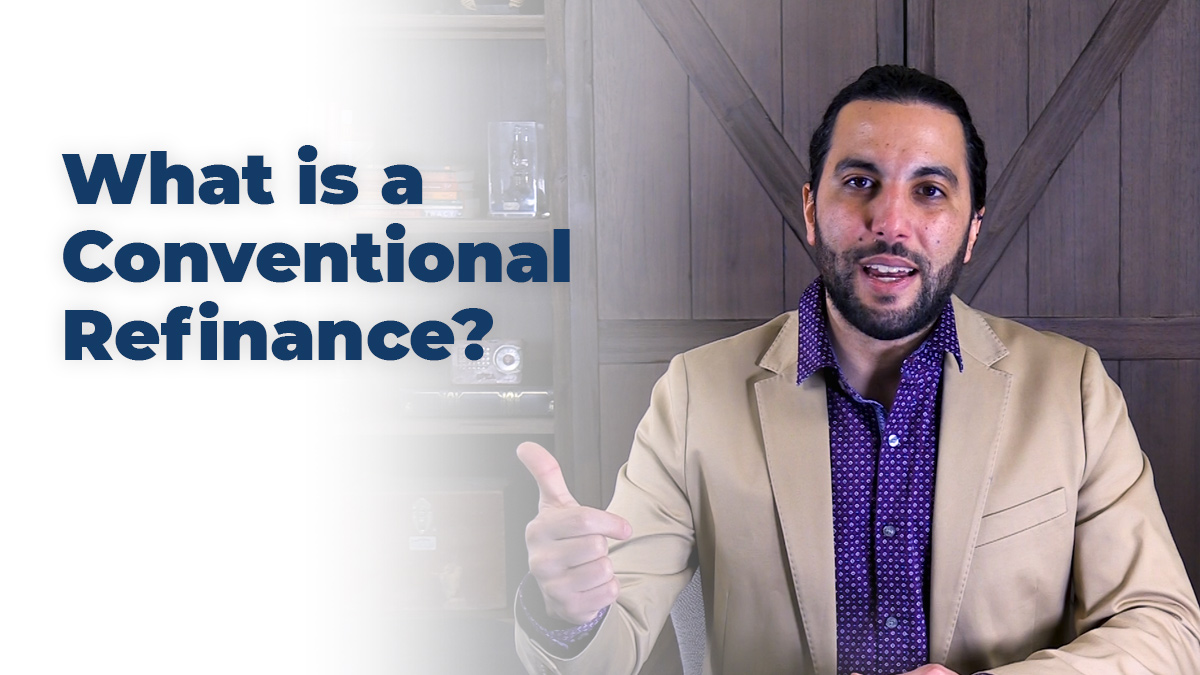In this article
A conventional refinance is a common type of mortgage refinance that involves replacing your existing home loan with a new conventional mortgage. A conventional, or conforming, loan is any mortgage that is not insured by the federal government. These types of mortgages follow the terms and conditions set by Fannie Mae and Freddie Mac. They are government sponsored institutions who are the largest purchasers of mortgages in the United States.

What is a conventional refinance?
Lowering monthly bills is a common goal, and a conventional refinance can achieve this by securing a lower interest rate or improved terms. With a reduced rate, monthly mortgage payments decrease, potentially saving hundreds of dollars monthly and thousands over the mortgage’s remaining life.
What are the benefits of a conventional refinance?
Applying for a conventional refinance can be a smart financial move for homeowners under certain circumstances. A conventional refinance involves replacing an existing mortgage with a new one that typically has better terms. Here are some common reasons why you might choose to apply for a conventional refinance:
Lower Interest Rate: One of the primary reasons for refinancing is to secure a lower interest rate. A lower rate can result in reduced monthly mortgage payments and significant long-term savings.
Reducing Monthly Payments: If you’re struggling with high monthly mortgage payments, a refinance can extend the loan term, which may reduce your monthly obligations, making them more manageable.
Shortening the Loan Term: Some homeowners want to pay off their mortgage faster. By refinancing to a shorter loan term, like from a 30-year to a 15-year mortgage, you can pay off your home more quickly and save on interest.
Cash-Out Refinance: A cash-out refinance allows homeowners to tap into their home’s equity and receive a lump sum of cash. This can be used for home improvements, debt consolidation, or other financial goals.
Switching from an Adjustable-Rate Mortgage (ARM) to a Fixed-Rate Mortgage: If you have an ARM and are concerned about rising interest rates, you can refinance into a fixed-rate mortgage to lock in a stable interest rate.
Removing Private Mortgage Insurance (PMI): If you have built up enough equity in your home, you can refinance to get rid of PMI, which is required on many loans with less than a 20% down payment.
Consolidating Debt: Refinancing can be used to consolidate high-interest debts, like credit card debt, into a lower-interest mortgage loan. This can save money and simplify your debt management.
Improving Credit Score: If your credit score has improved since you first got your mortgage, you may be eligible for a better interest rate, which can save you money.
Change in Financial Situation: If your financial situation has improved or changed, you might be in a better position to refinance and take advantage of better terms.
Renegotiating Loan Terms: You can renegotiate various terms of your mortgage, such as the interest rate, loan term, or even the lender to better align with your current financial goals.
How does a conventional refinance loan work?
A rate & term refinance works by paying off your current home loan with a newer mortgage with more favorable terms. This could be a lower rate to save monthly, eliminate mortgage insurance or a shorter loan term like a 15 year mortgage so you save interest over the life of the loan. The balance that remains is what your new monthly mortgage payment will be based on.
Who qualifies for conventional refinance?
Qualifying for a conventional refinance depends on several factors, including your credit score, income, home equity, and debt-to-income ratio. Conventional refinance loans are typically offered by private lenders and are not insured or guaranteed by the government (unlike FHA or VA loans). Here are some of the common eligibility criteria for a conventional refinance:
Credit Score: A good credit score is required to qualify for a conventional refinance. A FICO score of 620 or higher is often the minimum requirement, but a higher credit score can help you get better terms and lower interest rates.
Equity: You usually need to have a certain amount of equity in your home to qualify for a conventional refinance. 20% equity is ideal, which means your loan-to-value ratio (LTV) should be 80% or lower. If you have less equity, you might need to consider private mortgage insurance (PMI).
Debt-to-Income Ratio (DTI): Debt-to-income ratio will be calculated to ensure you can afford the new loan. The maximum allowable DTI ratio may vary among lenders, but it’s typically around 45% or lower.
Income and Employment: You need a stable source of income and employment to qualify for a conventional refinance. Pay stubs, tax returns, and other documentation will be used to verify income
Appraisal: Your home may need to be appraised to determine its current value. The appraisal helps the lender assess the loan-to-value ratio and the overall risk associated with the loan.
Property Eligibility: The property you’re refinancing must meet eligibility criteria. It should be your primary residence, a second home, or an investment property, depending on the loan program.
Documentation: You’ll need to provide various financial documents, such as tax returns, bank statements, W-2s, and more, as part of the application process.
It’s important to carefully consider the costs associated with refinancing, such as closing costs and fees, and compare them to the potential savings and benefits of the new loan. A conventional refinance can be a powerful financial tool when used strategically to improve your mortgage terms and financial situation. Consulting with one of our mortgage advisors will help you make informed decisions about when and how to refinance.

Are You Ready to Make a Move?
It's FREE and takes less than a minute to see what you could get.
